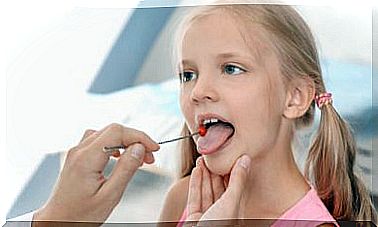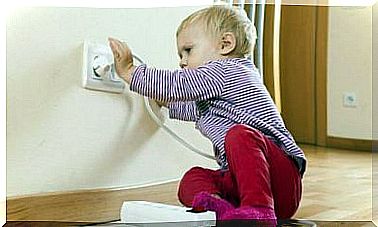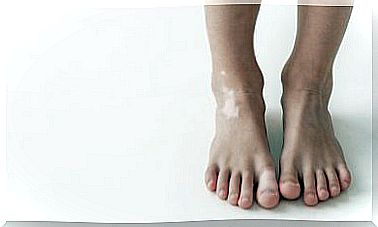Early Childhood Caries
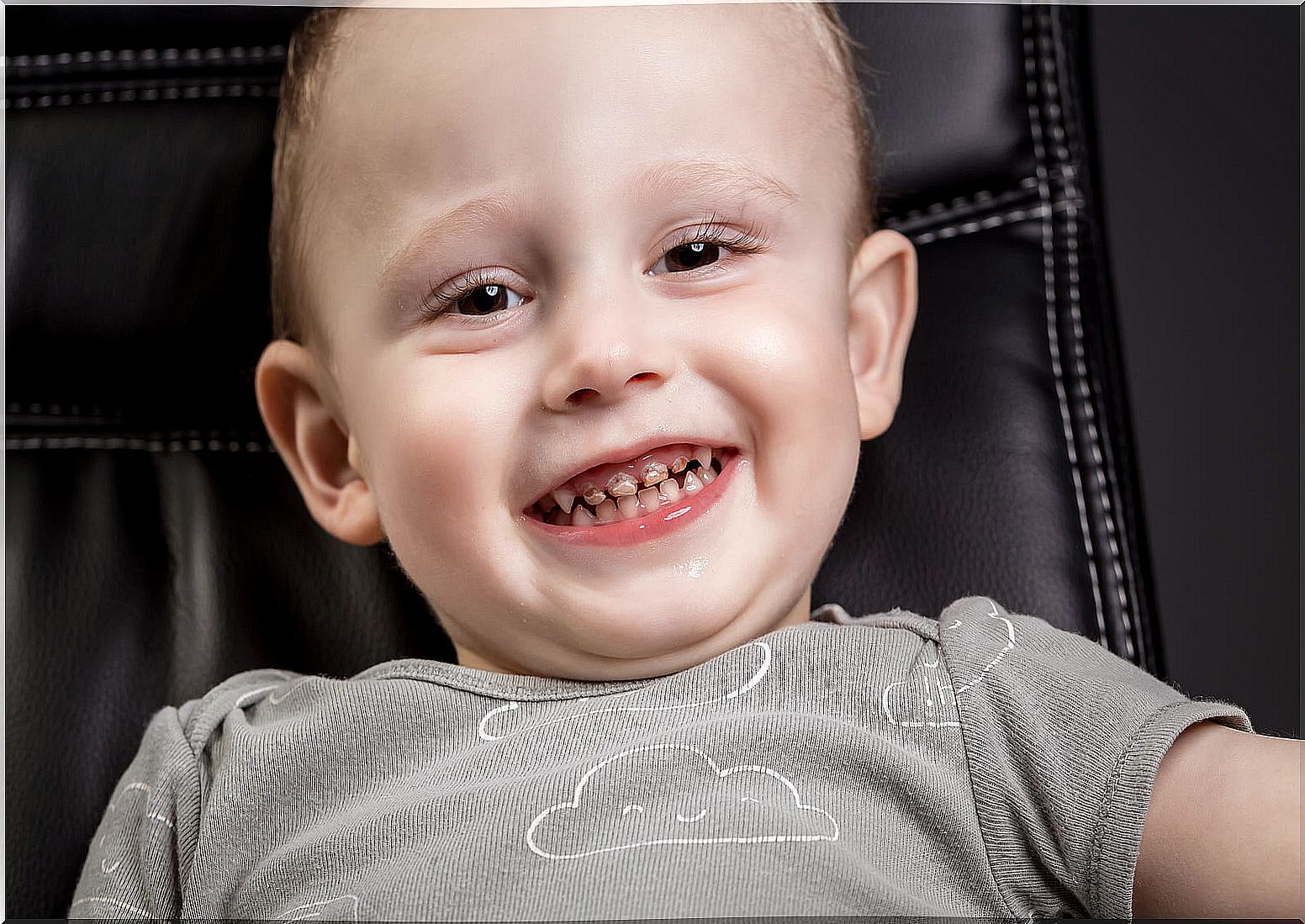
Early childhood tooth decay is a very common disease in the mouth of young children. It is a fast-moving pathology capable of destroying the child’s teeth. Fortunately, it can be prevented.
In the following lines we tell you everything you need to know to prevent bacteria and sugars from combining and making your baby’s oral cavity sick.
What is early childhood tooth decay?
Early childhood cavities, also known as bottle syndrome , are those carious lesions that occur in the temporal elements of young children. This infectious disease is characterized by rapid and aggressive progress.
It usually begins shortly after the eruption of baby teeth and manifests itself on the smooth surfaces of the anterior teeth, a rare location for cavities. It is more common in the upper incisors.
These cavities are associated with the great exposure of temporary dental elements to sugary liquids. For example, formula milk, juices, sodas, and other artificially sweetened beverages.
Sugar remains attached to tooth surfaces and is used by bacteria in the mouth. They produce acids that remove minerals from the teeth, progressively destroy them and, thus, give rise to cavities.
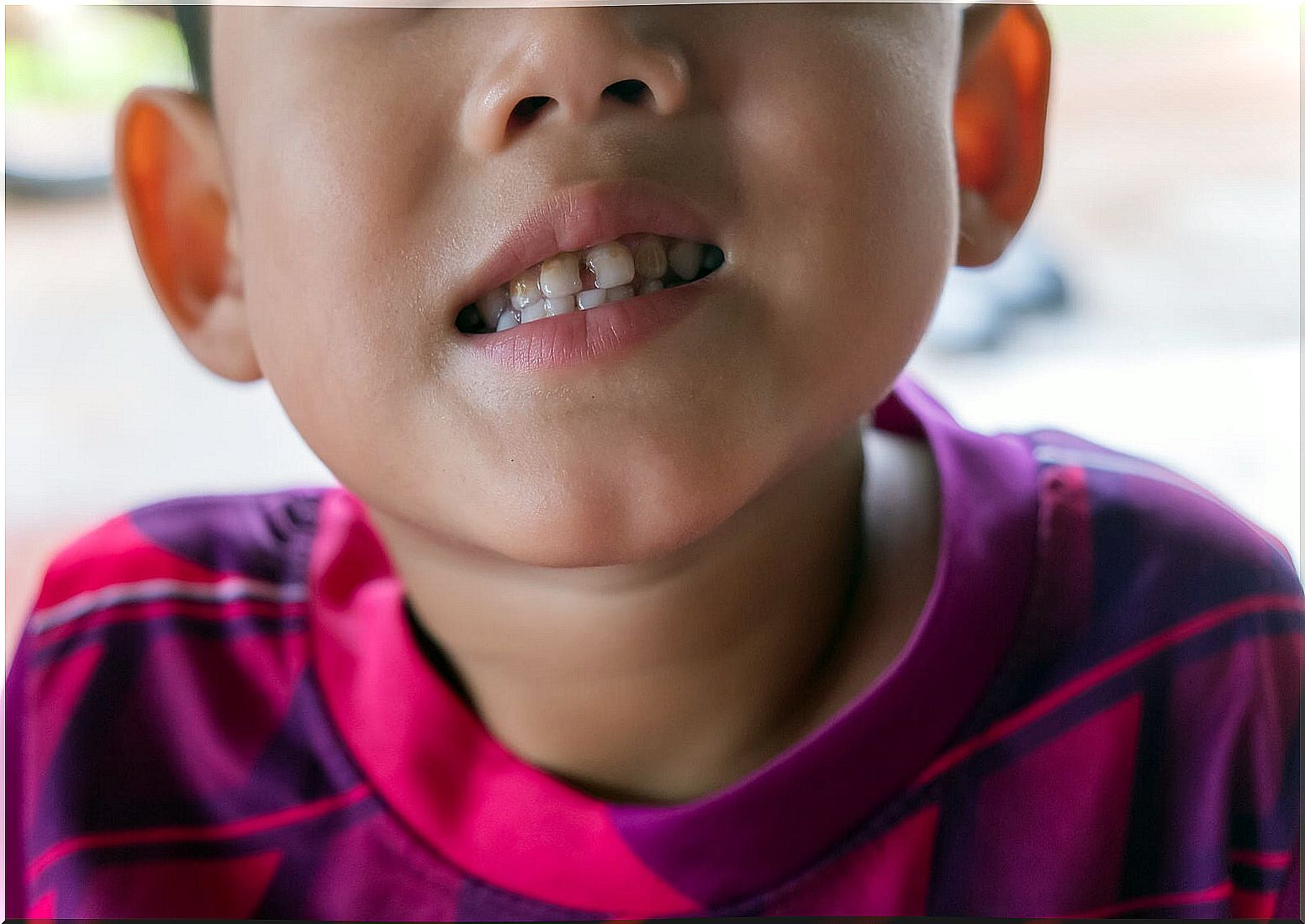
What do early childhood cavities look like?
As we have already mentioned, the most frequent location is in the upper front teeth, although it can occur in any of the temporary teeth.
The onset of the disease is a lesion called the white spot , a change in the opacity of the tooth that, in general, only the dentist’s eye can diagnose. Then it progresses to dark, black or brown spots. They have a semicircular or crescent shape and extend over the lateral walls of the tooth, from the gum to the cut area.
As the disease progresses, the child may experience pain, swelling around the tooth element, infections, and tooth crown fractures or loss. If the pathology runs its course, it is common to see young children with only the remains of the roots of their milk teeth in their mouths.
This ailment complicates normal functions: it makes chewing and speech difficult for the child. In addition, by losing the space that the milk teeth must keep towards the definitive ones, it favors the malpositions of the neighboring teeth or the permanent teeth when they erupt.
The aesthetic and social factor is also a complication that must be taken into account. The child may be teased or have a poor self-image.
If you notice any of these manifestations in your little one’s mouth, do not hesitate to immediately consult a pediatric dentist. The earlier the disease is treated, the better its prognosis and the less invasive the treatment.
Causes of early childhood tooth decay
We have already told you that the main origin of early childhood cavities is frequent contact of the primary teeth with sugar. In this sense, newly erupted teeth or with defects in their hard tissues, for example, hypoplasia, are more vulnerable.
The sugary liquids associated with this disease are formula milk, juices and soft drinks. There is also a link of the disease with children using pacifiers soaked in syrup, honey or sugar. The chances of lesions appearing are increased if sugary drinks are given and remain in the mouth when the baby sleeps.
Prolonged use of the bottle, that the child uses it to play during the day or that he falls asleep and remains with it in his mouth during the night, further aggravate the situation. The absence of oral hygiene habits also worsens the situation.
Breastfeeding on demand and prolonged, by itself, is not associated with this pathology. But if it is combined with poor oral hygiene, the habit of breastfeeding while the child sleeps, and the consumption of other carbohydrates, it can become cariogenic.
There are also family practices and habits that encourage the bacteria responsible for tooth decay to reach the baby’s oral cavity early. Giving him kisses on the mouth, blowing or tasting his food, cleaning the pacifier with his own saliva are attitudes that help the disease to develop.
How can they be prevented?
As a parent, you can prevent early childhood cavities by practicing eating and hygiene habits that take care of your child’s mouth. Here we share some tips to prevent this disease:
- Correct use of the bottle : use the bottle only to administer formula milk, breast milk or water without adding sugar. Avoid using the bottle to give juices or other sugary drinks. They should be avoided before 6 months and, if you decide to give them after this age, try to reduce their quantity and frequency and administer them in glasses or cups. It is recommended to start using a cup before the child’s first birthday.
- Do not put the baby to sleep with sugary drinks : it is important to teach the baby to fall asleep without the bottle. In the event that it is not possible, put water in it and not milk or drinks with sugar.
- Proper use of the pacifier : avoid that its use lasts until more than two years of age. Never soak it in sweet substances, juices, syrups or honey.
- Encourage a healthy diet : try to give your child varied, natural and nutritious foods. Avoid or reduce the consumption of processed foods that are high in sugar. Limit sweets and decrease the amount of juice you give her. The best drink is the water. Remember that up to 6 months your baby should only be fed with breast milk or, if it is not possible, with the formula that your pediatrician recommends.
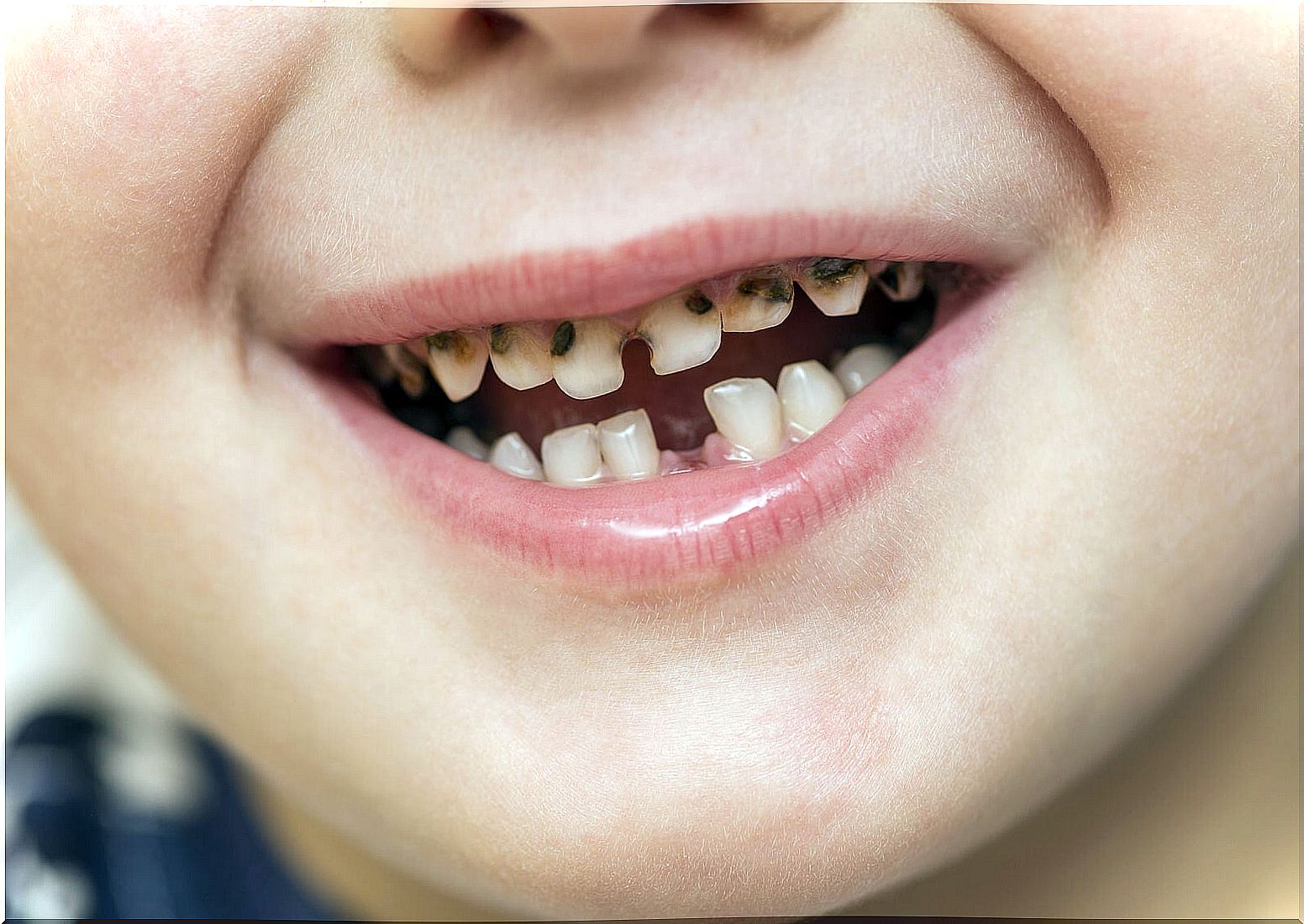
- Oral hygiene : clean your baby’s mouth after feeding, even if they don’t have teeth yet. Use gauze or a clean damp cloth to sanitize his gums. As soon as the first tooth erupts, you should start brushing it. As the little one grows, you can add toothpaste and floss to complement the cleaning. Remember that you will have to brush until he is old enough to do it himself.
- Use of fluoride : fluoride is an element that helps prevent cavities. It can be administered through drinking water, in drops or tablets. Also through toothpastes and in therapeutic ways in the dental office. It will always be the dentist who indicates the most appropriate way, according to their age and particular needs.
Your baby’s mouth is your responsibility
Before the first year of your child’s life, you should make the first consultation with the pediatric dentist. The professional will not only check that everything is fine in the mouth, but will also give you the necessary advice to be able to take care of it correctly.
Pay attention to your little one’s mouth, observe him when you sanitize him and lift his lips. If at any time you notice white or dark spots or any injury to the dental elements, do not hesitate to make an appointment with the dentist to solve it.
Avoid contagious habits. Do not share utensils that get into your child’s mouth to prevent your saliva (which may have bacteria in it) from reaching your baby’s. Avoid tasting her food, sucking on her pacifier to clean it, or giving her mouth kisses. If you have active cavities, treat them to decrease the level of bacteria.
You already know how to take care of your little one’s mouth and avoid early childhood cavities. You may have to make some changes or incorporate new habits, but it will all help maintain your child’s oral health.



